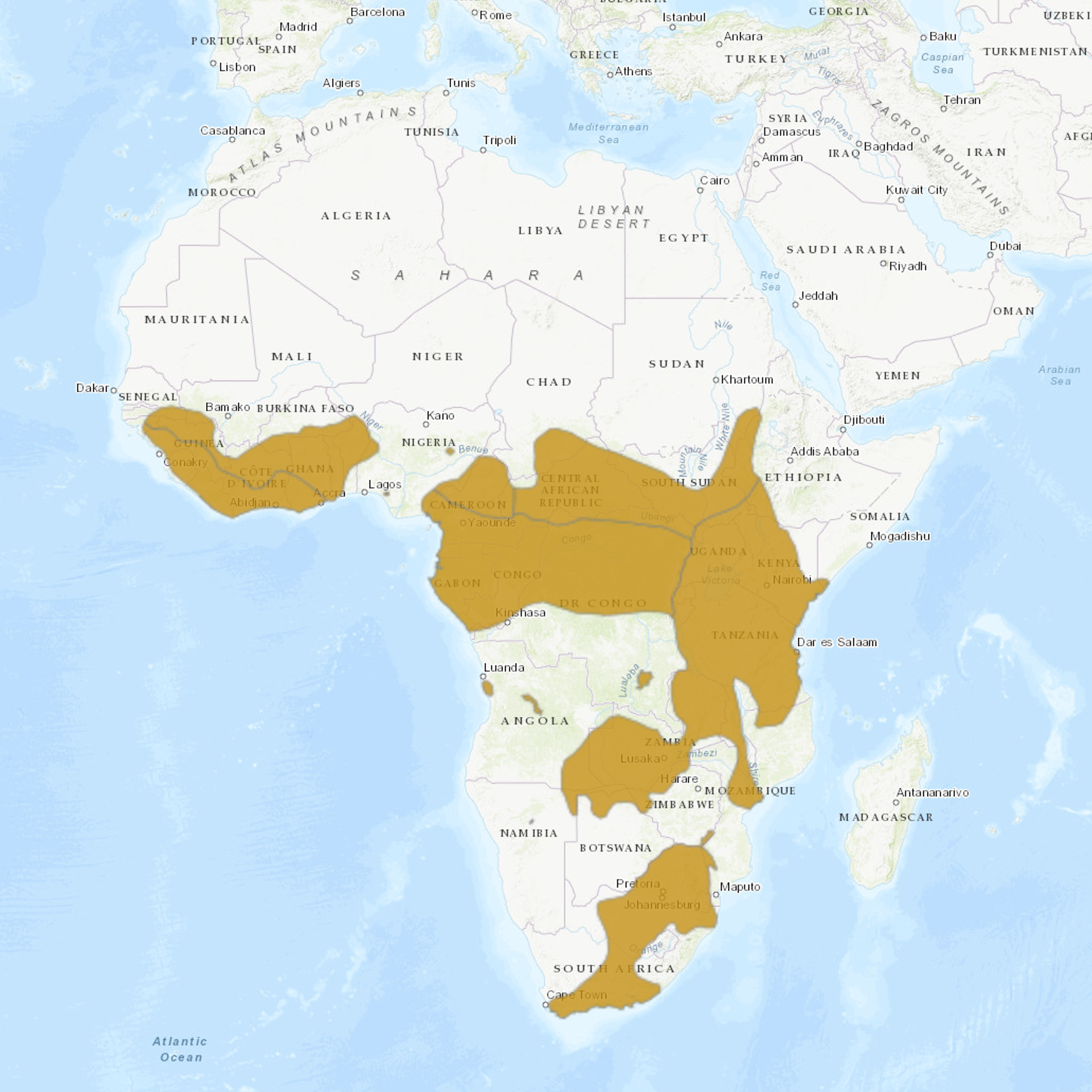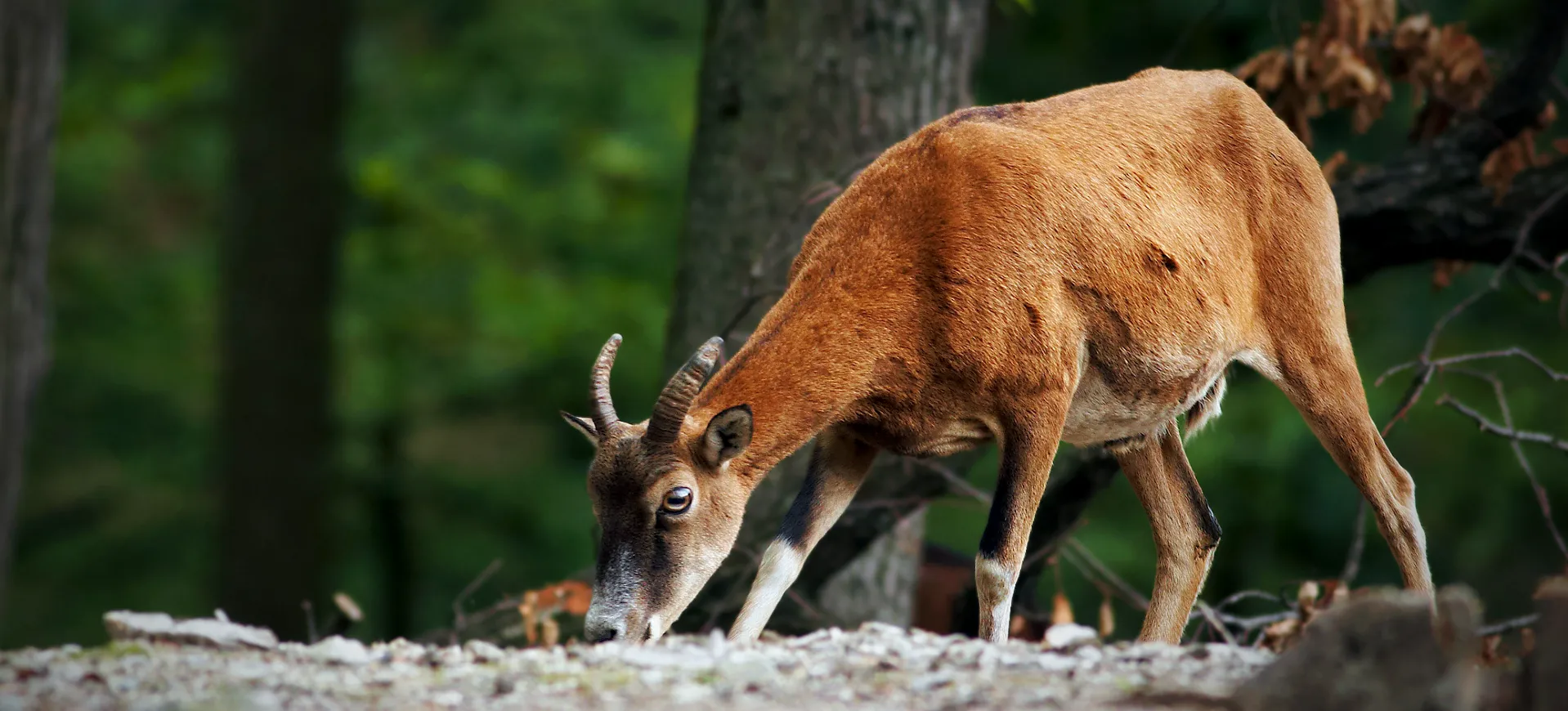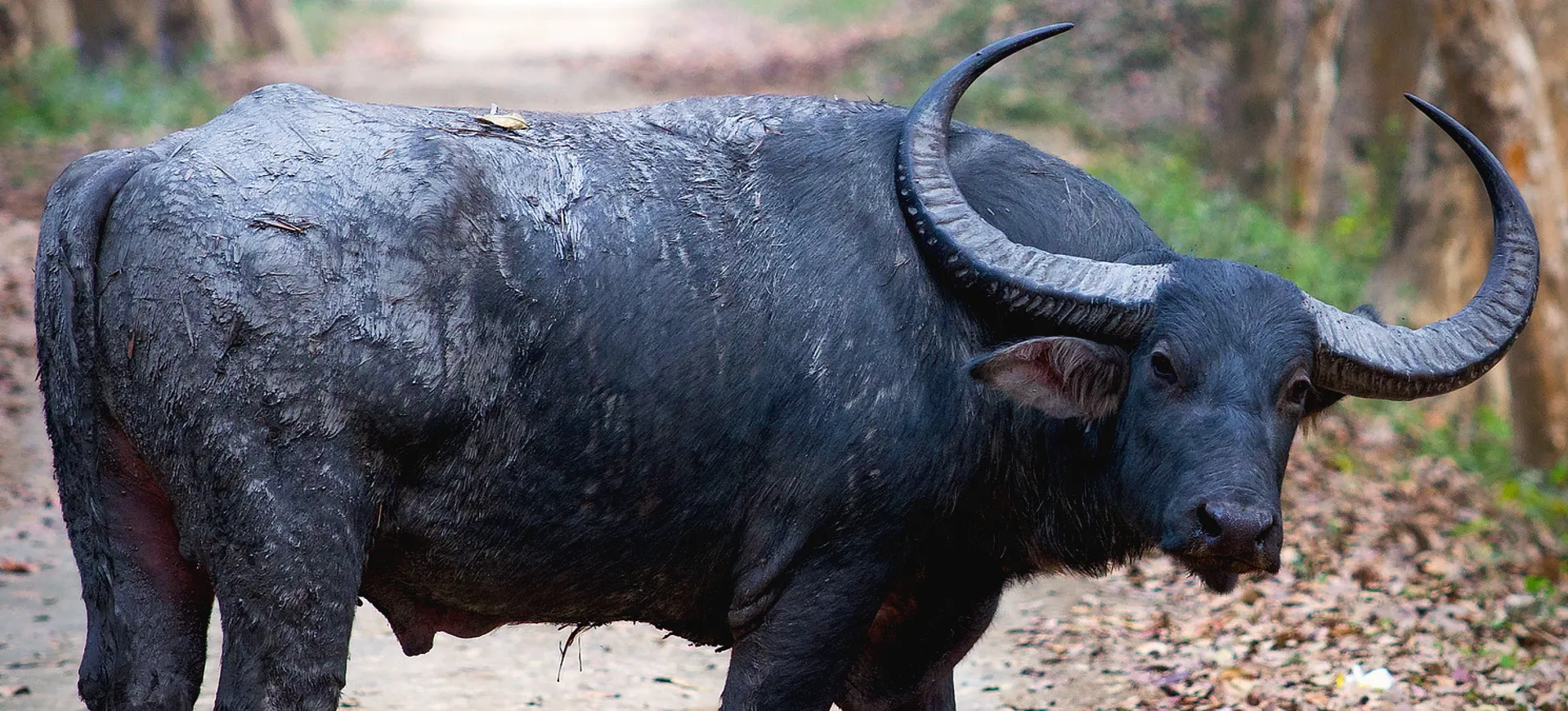Overview
The African Buffalo is a robust mammal that belongs to the bovid family. The African Buffalo is one of Africa’s “Big Five” game species known for its formidable horns and strong build. These creatures are highly adaptable and can live in various environments, from grasslands to swamps and forests.
Adult African Buffaloes are generally dark brown or black, which varies in shade depending on the individual and its habitat. While often portrayed as aggressive or dangerous, they are naturally social animals that live in herds. These herds can range from just a few animals to groups of over a thousand.
Unlike many other bovids, African Buffaloes are not easily domesticated due to their unpredictable nature and tendency to become aggressive when threatened. They are grazers but can also consume shrubs and trees when grasses are not readily available. Being social animals, they communicate using a variety of vocalizations, body language, and even touch.
Taxonomy
Kingdom
Phylum
Class
Order
Family
Genus
Species
Type
Current distribution:
The African Buffalo is predominantly found in Eastern and Southern Africa, specifically in countries like Tanzania, Zambia, Zimbabwe, Angola, and South Africa. There are also fragmented populations in West Africa and more lush, tropical forests in Central Africa.
Due to hunting and habitat loss, the African Buffalo's range has been reduced but is still relatively widespread. They are often found in protected areas like national parks and reserves, which provide the species with relatively stable living conditions.
Physical Description:
The African Buffalo is known for its robust and muscular physique, particularly its broad head and shoulders. These physical traits equip it well for survival in often challenging environments. Adult males stand out for their prominent, curved horns spanning a meter from tip to tip. These horns are not just for show; they are a significant tool for self-defense and indicate a male’s status within a herd.
The fur of the African Buffalo varies from dark brown to almost black, offering some camouflage in their natural habitats. As these animals age, the density of their fur can decrease, becoming notably sparser. This characteristic is especially noticeable in older males, who may also show signs of battle scars or wear on their horns, further amplifying their rugged appearance.

Lifespan: Wild: ~20 Years || Captivity: ~30 Years

Weight: Male: 1,300–2,000 lbs (590–910 kg) || Female: 1,100–1,200 lbs (500–544 kg)

Length: Male: 94–110 in (240–280 cm) || Female: 86–100 in (220–250 cm)

Height: Male: 51–59 in (130–150 cm) || Female: 47–55 in (120–140 cm)

Top Speed: 35 mph (56 km/h)
Characteristic:
Native Habitat:
The African Buffalo is highly adaptable and can be found in various habitats ranging from grasslands and savannas to swamps and forests. They prefer regions near water sources as they need to drink water daily. Water bodies are especially important during the dry season when grazing lands are parched.
In grasslands and savannas, they are usually found in larger herds, whereas in forests, the herds are smaller due to the restricted availability of grazing lands. Accessibility to water and vegetation quality play significant roles in their habitat preference.
Biogeographical Realms:
Continents:
Countries:
Diet:
Diet & Feeding Habits:
The African Buffalo is a grazer, primarily consuming grasses, although they also eat herbs and shrubs when grass is scarce. They prefer areas near water sources, as they need to drink regularly. It’s common for a buffalo herd to travel large distances for food and water.
Their digestive system allows them to feed on fibrous vegetation that other herbivores may typically avoid. The African Buffalo is well-adapted to poor-quality tall grasses and seasonal changes in food availability.
Mating Behavior:
Mating Description:
During the mating season, male African Buffalos compete to secure access to receptive females. These competitions can escalate into physical confrontations that involve locking horns and powerful shoving matches. The stronger, dominant males generally come out victorious, gaining the right to mate with females who are in estrus. These battles not only determine mating privileges but also help to establish or reinforce the social hierarchy within the herd.
The timing of the mating season often coincides with rainy periods, which ensures an abundance of food resources. This is crucial because adequate nutrition is essential for the gestation period and the subsequent nursing of the young. Females are more likely to be in estrus during these times, as the favorable conditions contribute to successful reproduction and the healthy development of offspring.
Reproduction Season:
Birth Type:
Pregnancy Duration:
Female Name:
Male Name:
Baby Name:
Social Structure Description:
African Buffaloes live in complex social structures that are usually matriarchal. Herds often consist of related females and their offspring, led by dominant males. Males that are not part of a breeding herd often form bachelor groups. These groups have their hierarchy, usually determined by age and size.
Social bonds are strong within the herd, and individuals communicate through vocalizations, touch, and body language. Grooming is a common social activity. In times of danger, the herd will form a protective circle around the young and weaker members, showcasing their cooperative behavior and social cohesion.
Groups:
Conservation Status:
Population Trend:
The African Buffalo population is generally considered stable, although some areas are experiencing a decline. This decline is primarily attributed to habitat loss and hunting. Nonetheless, the African Buffalo continues to have a robust presence in many national parks and reserves throughout the African continent.
The species is listed as “Near Threatened” on the IUCN Red List. It faces various threats, including habitat loss, diseases like bovine tuberculosis and corridor disease, and human activities. Hunting, in particular, poses a significant challenge to the African Buffalo’s long-term survival.
Population Threats:
The primary threats facing the African Buffalo are manifold, with habitat fragmentation and loss topping the list. Agricultural expansion is increasingly encroaching on the natural habitats of the African Buffalo, leading to displacement and increased competition for resources. In addition, diseases such as bovine tuberculosis can wreak havoc on their populations, causing significant decreases in numbers that can be hard to recover from.
Hunting constitutes another significant threat to the African Buffalo. While trophy hunting is regulated in some areas to maintain a balance in the population, illegal hunting and poaching remain prevalent. The meat is often sold for consumption, and the hides and horns may also be traded, contributing to a decline in some local populations of this species.
Conservation Efforts:
Conservation initiatives for the African Buffalo predominantly focus on habitat preservation and implementing rigorous anti-poaching measures. Many of these animals are found in protected areas like national parks and reserves, which serve as sanctuaries that help maintain relatively stable populations. Rangers often patrol these protected zones, and various technologies like drone surveillance are employed to combat poaching.
Another angle of conservation efforts is directed at disease control. Programs are in place that monitor the health of both the African Buffalo and the livestock with which they may come into contact. By controlling diseases like bovine tuberculosis, the health of entire herds can be improved. This benefits the African Buffalo and the larger ecosystem, including predators that rely on them as a primary food source.
Additional Resources:
Fun Facts
- African Buffaloes have an excellent memory and have been known to recognize humans and other animals that have threatened them.
- They are one of the few animals that actively confront and chase away predators, including lions.
- A healthy adult buffalo has very few natural predators.
- Their digestive system allows them to feed on vegetation that many other herbivores can’t digest.
- African Buffaloes can consume up to 35 liters of water in a single session.
- Despite their bulk, they are good swimmers and can cross bodies of water when migrating.
- They have a highly developed sense of smell and hearing, but their eyesight is relatively poor.
- African Buffaloes are known to engage in “voting behavior,” where herd members indicate their travel preferences by standing up, staring in one direction and then lying back down.
- They can alter the landscape by grazing habits, affecting the vegetation in an area.
- An adult buffalo’s horns can grow so large that they have a “helmet-like” structure called a “boss,” which is strong enough to stop a bullet.




















































































